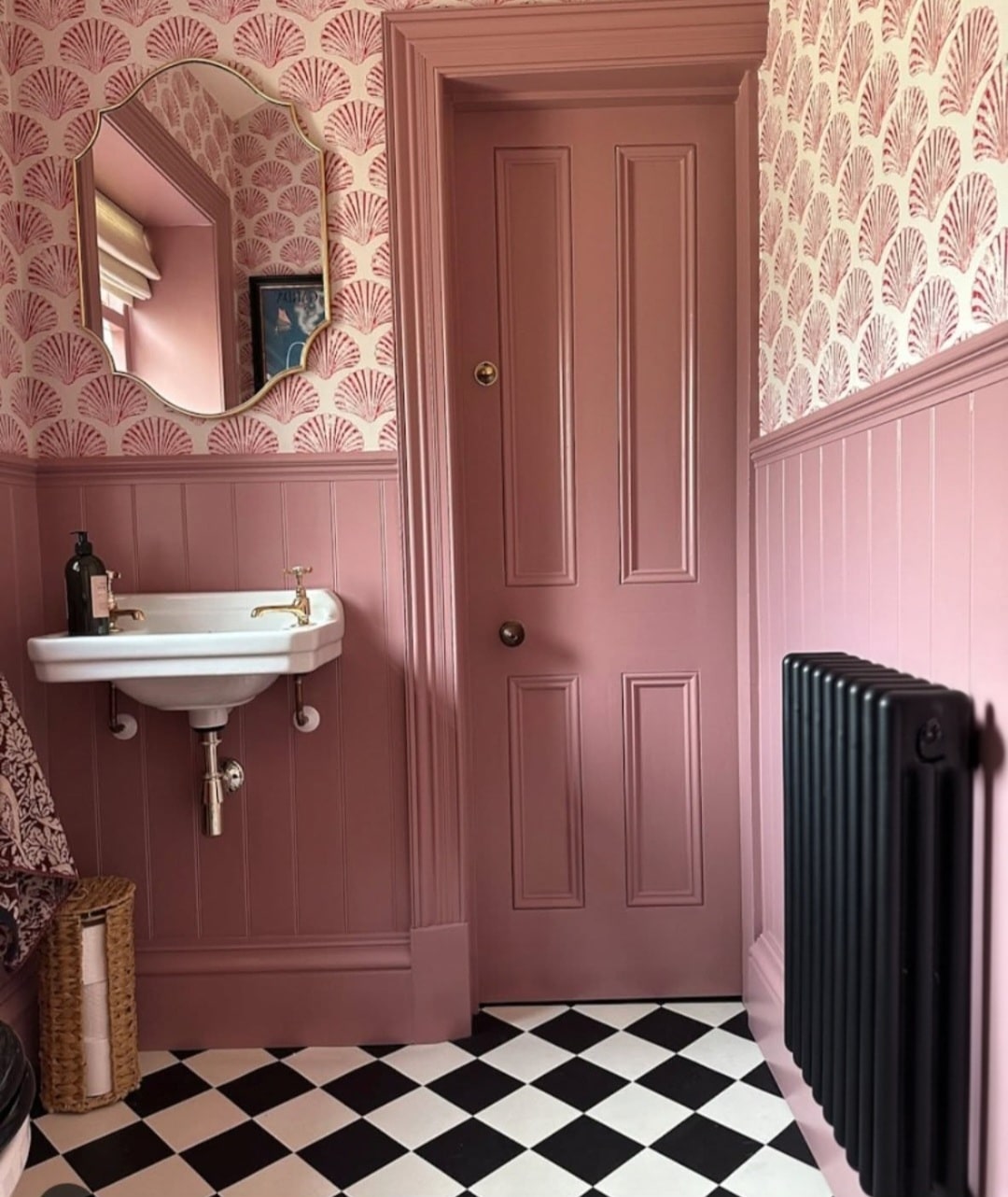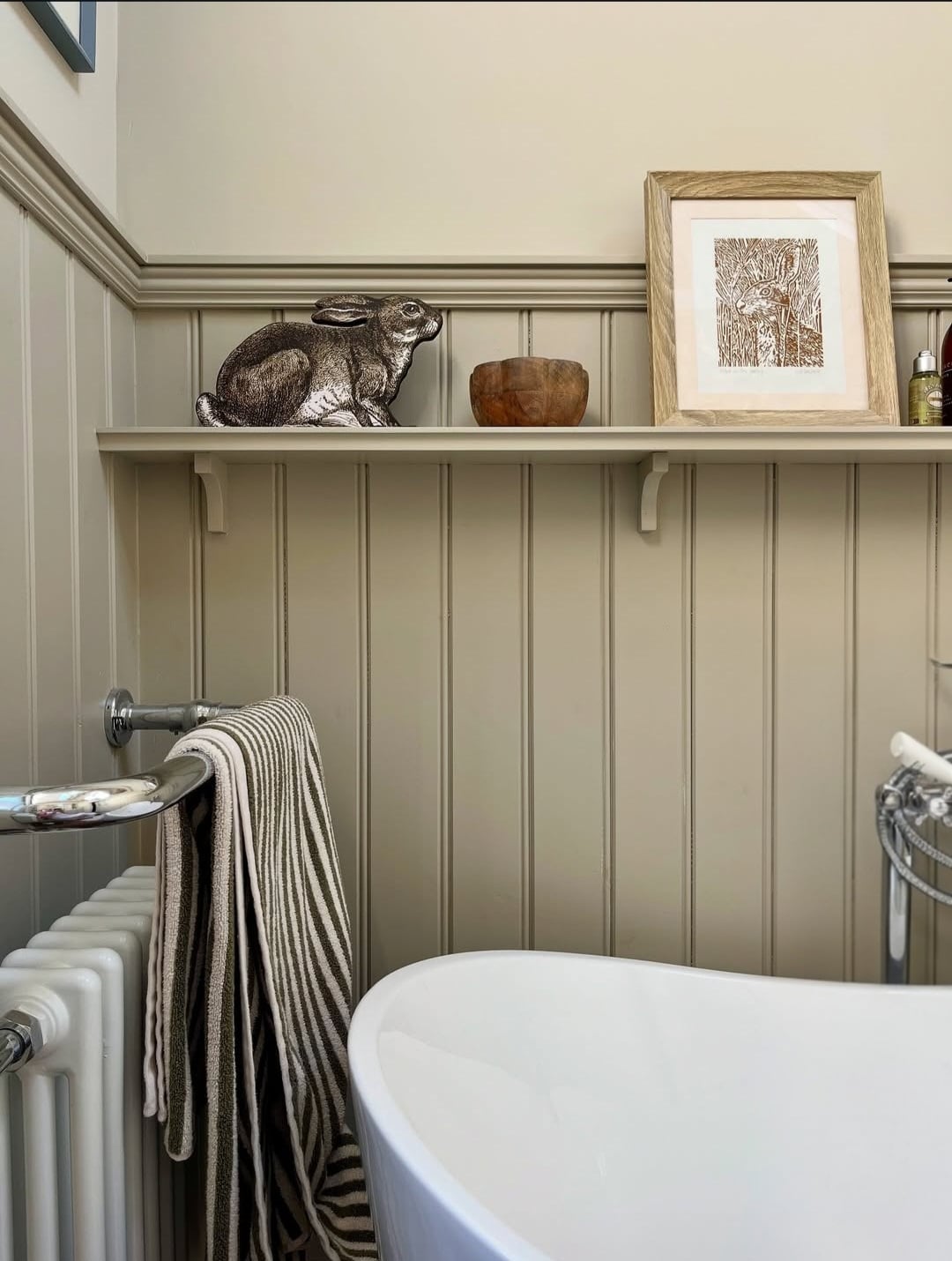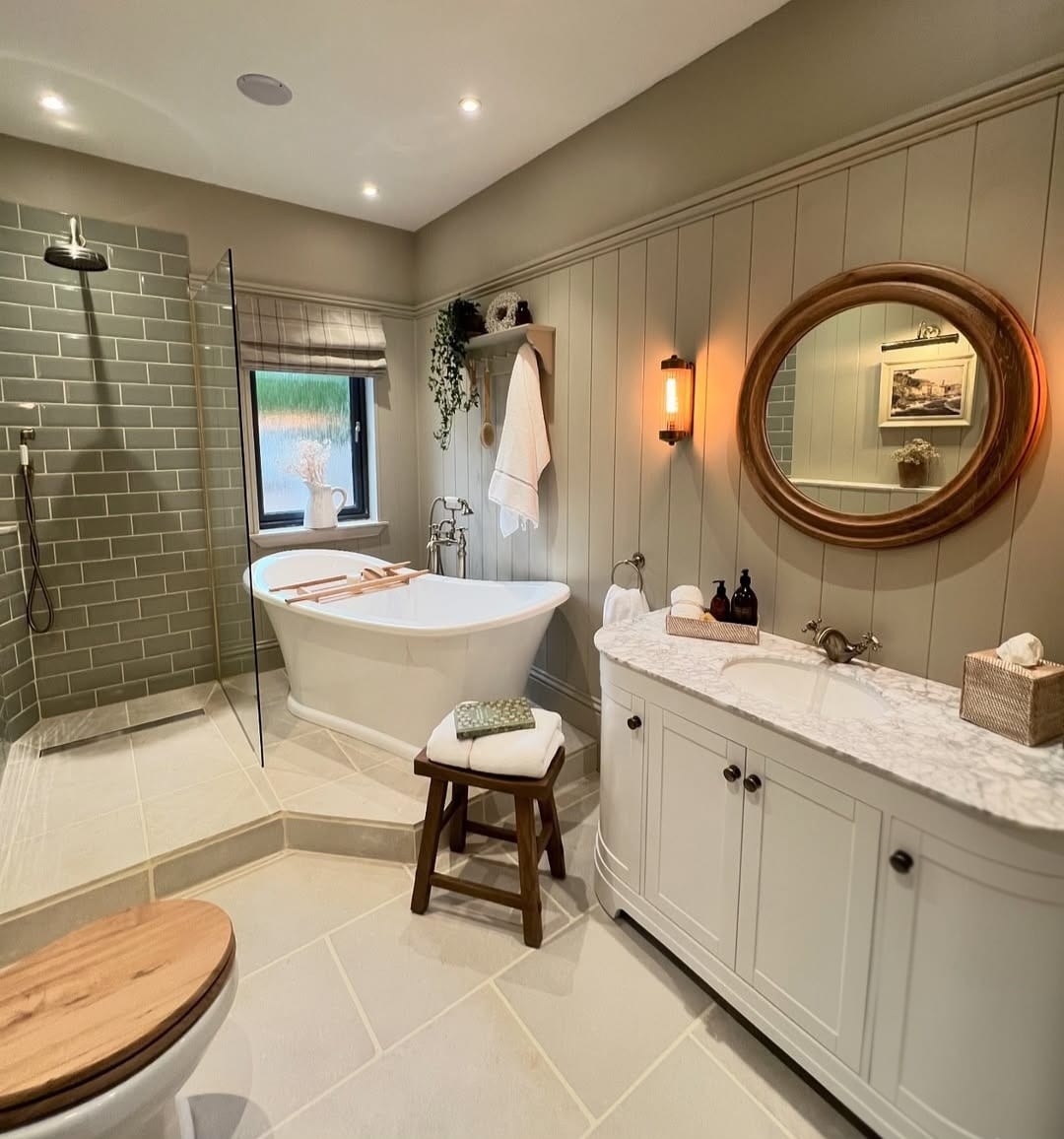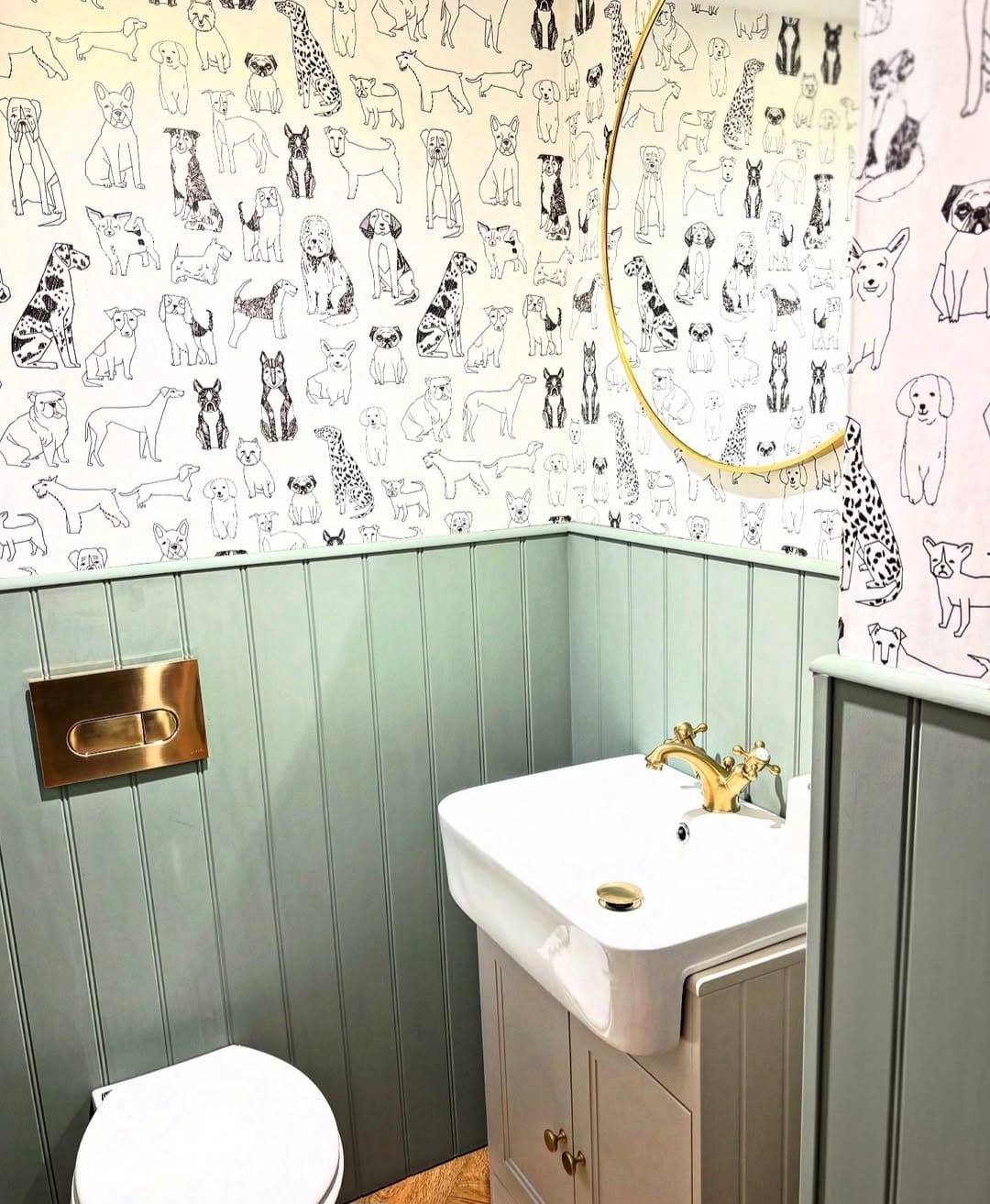
Bathrooms with tongue and groove panelling bring subtle luxury and style to a bathroom and small spaces. They can lift walls where paint just can’t, and it’s great alternative to tiling.
Often the concern with groove wall panels is that it can quickly become dated in a property. But the question should really be, how can something date that has been around since the 13th century? No, seriously.
Bathroom tongue and groove panelling has definitely seen a revival over the last couple of years and it is no longer being used as just a means to keep out damp and to provide insulation. Tongue and groove panelling was used for this very reason during these times.
It has now been reimagined as a very simple and effective way to add character and depth to any home, as well as disguising lumpy, bumpy walls for a seamless finish. The profile you choose very much dictates the style. From wood panels, tongue and groove, shiplap and v groove. It’s also available in easy moisture resistant sheets for the DIYers out there.
Is Tongue And Groove Ok To Use For Bathrooms?
Yes, as long as water resistant sheets of tongue and groove panelling are used it will withstand the humidity and moisture that a bathroom creates.
Just remember to paint it with a washable, moisture resistant paint to seal it or it will be an absolute pain to maintain further down the line.
What’s The Difference Between Shiplap And Tongue And Groove
Tongue and groove panelling is designed so each piece meticulously slots into one another. Whereas shiplap just needs to be overlapped and doesn’t have to fit perfectly. As long as each piece is level once being fitted, both shiplap and tongue and groove can look incredibly effective.

Bathrooms With Tongue And Groove Panelling Ideas
There are so many different ways to add tongue and groove panelling to a bathroom, and your style should dictate the choices you make. Let’s have a look at a range of different tongue and groove panelling ideas to give you inspiration for your own home.
Shiplap Panelling
Standard shiplap panelling is a great option for a bathroom. It creates an ultra stylish yet relaxed and nautical look that lends itself to a bathroom.
It’s particularly good for creating a rustic, farmhouse bathroom style. This is the less traditional style of tongue and groove, it can be used to line ceilings too.
It goes without saying that this type of panelling cannot be installed in a shower area because of the direct contact water. It’s perfect for a small room too as it can help to elongate the walls, giving the illusion of a bigger space.

Tongue & Groove Panelling
This style of tongue and groove panelling is perhaps the most popular choice. It is a perfect solution for those seeking a traditional look, country and shaker style effect. It adds depth and character to a space, instantly changing the feel of bare walls.
Whilst shiplap can look gorgeous run to ceiling height, tongue and groove panelling generally works best when run up the walls halfway and finished with a border or dado rail. The area above the panelling is usually then painted or wallpapered.
It’s not just a style suited to homes, this is a popular look for country style bars and restaurants. Tongue and groove bathroom panelling can be painted in your colour of choice too, just ensure to always opt for a washable, moisture resistant paint for the bathroom.

V Tongue & Groove Panelling
V tongue and groove panelling is another popular choice when it comes to choosing the best panelling for a bathroom renovation.
Once the two planks are fitted together it creates a V shape, hence the name. This low profile type of panelling provides a much neater finish than the likes of shiplap. It’s a very uniform finish and can suit both modern and traditional bathroom spaces.

Ceiling Tongue & Groove Bathroom Panelling
It’s not just about those walls! Tongue and groove bathroom panelling is a fantastic choice for lining the ceilings.
How often are bathroom ceilings just left painted? T&G panelling has the ability to lift and really create a decorative feature when you walk into room when it’s on a ceiling.
The groove ceiling can be the only panelled feature, but it looks incredibly effective when the walls have vertical panelling to match too.
This look is not for everyone, but if styled correctly it can look sensational, as demonstrated by the fabulous House Nine Design team.

Half Wall Panelling
Half wall panelling can be a great way to use vertical tongue panels without needing to take it up to the ceiling. This style of panelling provides a classic look that is perfect for period properties and traditional interior schemes.
More often than not, people choose to use the top of the panelling to blend into a secondary colour, but actually colour drenching the wall in the same colour is a great way to give the illusion of higher ceilings.

Pair Wood Paneling With Bathroom Tiles
A fully tiled bathroom can feel cold and flat, whilst switching it up with the addition of classic tongue and groove panels in the dry section of the bathroom instils visual interest and the verticality gives the illusion of more space too.
White walls is a traditional choice when it comes to panelling because it keeps the space feeling neutral and uncomplicated.
Pair with white tiles for a continuation of the theme and opt for charcoal or black grout for a pop of definition and modernity.

Take It Floor To Ceiling
Traditionally a skirting board is added before panelling a bathroom, but actually, taking the bathroom wall panels from floor to ceiling instead keeps things simple and flawless within the space. This is a great ideas for a smaller room as there is less design accents to pay attention to, and instead the verticality helps to draw the eye up.
This is a classic look that could be used in a Victorian bathroom, farmhouse style home or in a period property.

Create An Accent Wall
You don’t need to use groove wall panelling across an entire bathroom to make it work. Instead just create an accent wall on your vanity sink side for added visual interest in the space.
Not only is this more affordable than panelling the entire bathroom, but it can be a workable solution in a small bathroom if you’re worried about it crowding your room (it won’t!).
Paint in the same colour as the rest of your walls for a cohesive space that brings a touch more interest and depth than traditional painted walls.

Tongue and groove bathroom panelling is an affordable, effective and attractive way to renovate a bathroom.
It can be a cheaper alternative to tiles, whilst it adds character and depth to the space. Let your style dictate the choice of tongue and groove panelling you go for, and to create a coherent feel throughout your home.

If you opt for a half wall panelling look, add a dado rail above it. It will create a finished look and creates a beautiful divide between that and the upper walls.
Choose a darker colour on the panelling, this will ground the room. Paint the upper half of the walls in a shade at least two shades lighter so you can a depth of colour between the two.

Instead of carrying tongue and groove panelling up the entire length of the wall, leave the last 1/3 or so free, as you would from a standard picture rail.
I’d be inclined to then paint this section of the wall and ceiling in the same colour for a much more seamless feel, this will avoid it feeling like there is a band of colour floating on its own.

Don’t be afraid to use wallpaper in your design above panelling. The below may be the cutest wallpaper I have seen, if you’re a fan of dogs, why not!
A warm sage green colour is always a good idea for bathroom panelling, it’s soft, soothing and virtually the easiest colour on the eyes.


